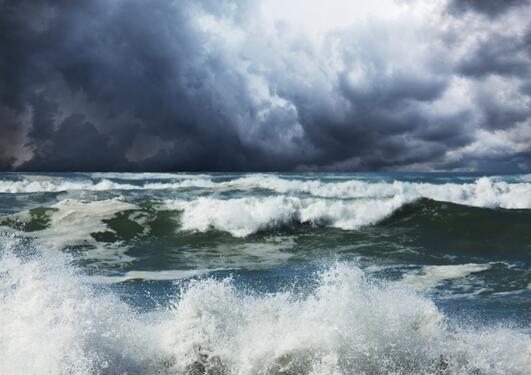The ocean in the climate system
The ocean plays a fundamentally important role in the Earth's climate system by storing large amounts of heat, transporting heat from warm to cold regions, and releasing heat and moisture to the atmosphere. We study how the ocean interacts with other parts of the climate system – land, atmosphere, sea ice, and living organisms.

Main content
The climate system connects land, atmosphere, oceans, and life on Earth. The ocean's large capacity to absorb heat is one of its important functions; over 4/5 of the total increase of heat content of the Earth system in the second half of the 20th century is estimated to have been taken up by the world ocean. The ocean releases heat to the atmosphere and by heating the atmosphere helps drive the wind system that in turn drives the currents in the upper ocean.
Ocean currents transport warm water to the high latitude regions, where further heat loss occurs and the water becomes denser, leading to convective mixing. Formation of sea ice efficiently cools the water and makes it more saline, producing the cold, dense bottom waters that spread through the world's oceans as part of the thermohaline circulation. Ice cover insulates the water and prevents direct interaction with the atmosphere in winter; it also has higher albedo than the dark open water.
Climate sets the conditions for organisms living on land and in the sea, and life on Earth in return affects climate – for example, marine phytoplankton change the concentrations of greenhouse gases and aerosols in the atmosphere. In the physical oceanography group at the GFI we are primarily interested in the physical coupling of the ocean with the atmosphere (air-sea interaction), with land (land-ocean interaction), and with sea ice in the polar regions (ocean-cryosphere); we also study the influence of the physical environment on marine life (ocean-biosphere).

